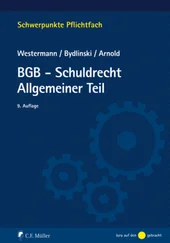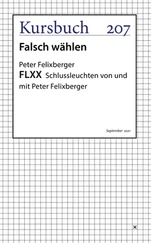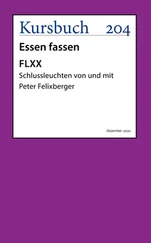“I know it’s your call, but I’d recommend against this,” the crew chief said as he expertly looped a rope under Elizabeth’s arms and fashioned a bowline knot that wouldn’t slip. “This ground’s jumping. This trench could slam shut any time now.”
Atkins couldn’t have agreed more. The recent tremors had been unusually sharp. “Try to make it quick, Liz,” he said. He took her hands in his. This was a fine, brave woman. During the last few days, he’d come to realize how extraordinary she was and how much she meant to him. He wanted to talk to her. They hadn’t had many chances since the quake. Atkins sensed she felt the same way but wasn’t sure. He hoped so at least.
“Don’t press it,” he said.
“Don’t worry about that,” Elizabeth said, smiling. “I flunked rappelling when I was a Girl Scout.”
Elizabeth’s helmet was fitted with a headset microphone so she could talk with the team on the surface. She rechecked all the knots and buckles in her seat harness and signaled to the men to lower her over the side.
“Take me down ten feet,” she said. Her back to the trench, she pushed away from the wall with her feet, letting the rope glide through her fingers. She’d already picked out several places to check that were close to the surface.
In a few minutes, she shouted: “Bull’s-eye! There’s multiple scarring here. Sand boils, a big lateral offset. This might have been made by the 1811-1812 quakes.” Using a trowel, she gently scraped away at the side of the cliff. “There’s plenty of peat down here.” She put the samples into cellophane packs that she carried in a waist pouch.
Atkins hoped that would be enough, but he knew better. He heard Elizabeth say, “Let’s try another fifteen feet down.”
A helicopter crewman carefully played out more rope.
“I see some evidence of scorching,” Elizabeth said. “They may have been caused by lightning strikes that burned away some of the hillside.” She deposited a few more fragments of charcoal into her sample bag and asked to be lowered ten feet.
It was a gray, gloomy morning with a sharp wind. Not much light filtered down into the crevasse. Atkins and the others had safety ropes tied around their waists so they wouldn’t fall in if the ground suddenly gave way. From what he could see from above, the exposed wall of layered sediment would probably be measured in the thousands of years, not tens of thousands.
That was fine, he thought. They were more interested in the recent record of big quakes—those that had happened one or two thousand years before the cataclysms of the last century. That would be long enough to show a pattern—if one existed.
“It’s like a layer cake down here,” Elizabeth said. “Let out another fifteen feet.”
Playing her light on the uneven walls of the trench, Elizabeth zeroed in on another big scar, which appeared to have been made by an explosion crater.
“This sand blow… is… a… monster!” she cried out. She was down about eighty feet. The vertical offsets were even more impressive—and equally troubling. She examined two of these zigzag tears, scraping samples from each. One of them appeared to have severed an ancient streambed. The slightly coarser, darker sand might have been easy to overlook, but not for Elizabeth’s practiced eyes.
“It took a pretty good-sized quake to break through this streambed,” she said. “I’m going to do a little measuring.”
She used a steel tape measure to get the exact dimensions of the offsets, requesting several times to be raised or lowered a few feet. She also took photographs with the camera, which had an automatic flash.
“How long’s she been down?” the crew chief asked.
Atkins glanced at his watch. “Nearly forty minutes.”
“The soldier shook his head. “We’re pushing our luck.”
Atkins wanted to bring her up. Then he heard Elizabeth’s excited voice over his headset.
“Here’s another slam dunk! That offset was bigger than I thought. At least twelve meters.” Caused by the fracturing waves of an earthquake, an offset was a clear break or crack in a layer of sediment or rock.
The news startled Atkins. An offset of that size could only have been made by an exceptionally strong earthquake. It was evidence the fault had already produced several large quakes long before the triple play in 1811-1812. The deep tear in the earth’s crust had remained dangerous for a long time.
“Liz, did you find any carbon on the offset?” he asked.
“You bet,” she said. “Some good pieces.”
A strong northerly wind stung their faces and made it feel much colder. Atkins had just put his hands in his pockets to warm them when the earth moved. A minor tremor.
“Hey, look over there!” one of the geologists shouted. About thirty yards away, a twenty-foot-long strip of earth had peeled away from the edge and fallen into the fissure.
“Elizabeth, are you all right?” Atkins said into his radio. Dust clouds were rolling out of the crevasse.
He heard her say, “Bring me up!”
The lift began, but the rope hit a snag and wouldn’t budge. The hoist started to smoke from the friction.
“Shut it down!” the crew chief shouted to the operator.
After pulling Elizabeth up about ten feet, the rope had stuck on something.
“I’m hung up,” Elizabeth said.
A shower of dirt and clay had fallen on her. Her shoulder throbbed where one of the larger pieces had struck her. She tried to see in the choking dust, covering her mouth and nose with a handkerchief. It was like groping in fog. She couldn’t see her hands in front of her face.
The ground lurched again, rocking her harness. A block of sediment broke away from the wall of the fissure somewhere below her and smashed into the bottom, throwing up more thick dust. From the sound it made, it was a big, heavy chunk of earth.
Elizabeth figured she was down about 150 feet. Keeping one hand on the harness, she reached up with the other and felt something overhead. The rope was twisted around it.
The next jolt was even stronger. The upper walls of the crevice seemed to move closer together. But maybe that was just her imagination.
Elizabeth smelled something coming up from the depths. Sulfur.
As the dirt settled, she saw what had fouled her rope—the root system of a tree. Long buried and completely carbonized, part of the trunk had broken through the wall during the last tremor. The rope was caught between several gnarled roots, each as thick as a man’s arm.
“I’ve got a problem here,” she said. “Give me a little slack.” Pulling herself up in her seat, she was able to clear the tangle, using her feet for leverage, pushing out against the wall.
“I’m free. Get me out.”
The hoist started pulling her toward the surface again. Grit and clay kept pouring down on her from the sides of the crevasse. A couple of pieces grazed her helmet. In minutes she was back at the surface.
Someone estimated that the fissure had closed about a foot. There was no telling how long it would remain open.
“How are you doing?” Atkins asked Elizabeth after he helped pull her out of the trench. Her face and hands were covered with mud.
Elizabeth managed a smile. “I’ve got a whole sackful of samples,” she said. “The fissure is like a road map. There’ve been a lot of quakes here. They’ve left marks everywhere. I counted at least fourteen of them.” She looked at Atkins. “They’re big, and they come in clusters.”
MEMPHIS
JANUARY 16
6:45 P.M.
WHEN THEY RETURNED TO MEMPHIS, ATKINS AND Elizabeth were exhausted. Nursing a headache, Elizabeth took some aspirin and went to lie down. Meanwhile, the earthquake command center was rolling in high gear. Another round of GPS data was due by satellite transmission within an hour. And Guy Thompson’s people were running computer simulations of the latest aftershock activity along the greatly expanded seismic zone. Each pass helped them scope out in sharper, ever clearer detail the length and breadth of the new fault.
Читать дальше












